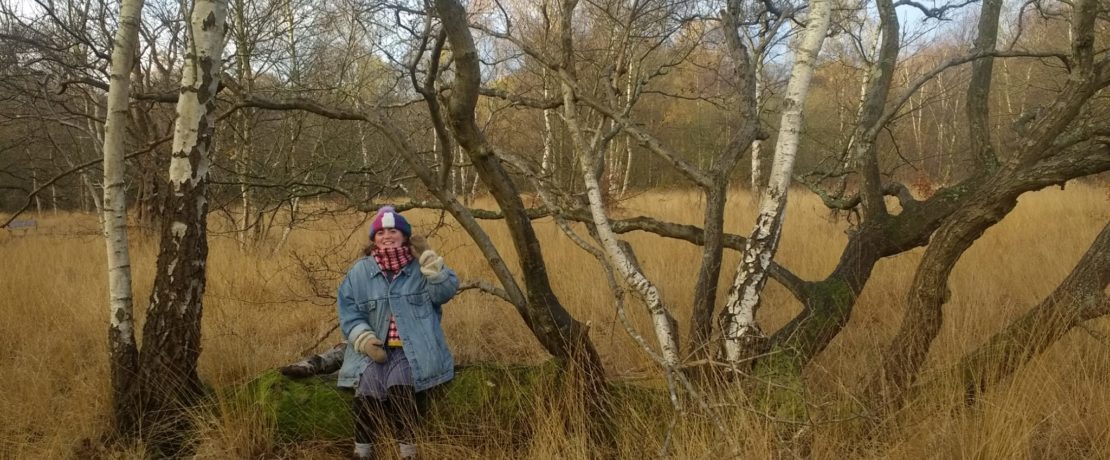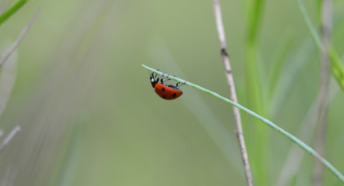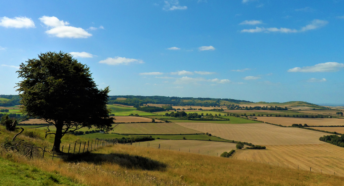Winter wander advent calendar
This year, celebrate the festive season by joining in with CPRE’s winter wander advent calendar, devised by Lucie Rymer to encourage you to go outside every day in the run-up to 25 December.
The weeks up to Christmas are an exciting time, but it can also be stressful, especially if you’re responsible for finding presents for lots of people or for cooking the big meal. This year, approach the festive season gently with CPRE’s winter wander advent calendar, which takes you outside every day during Advent.
The aim is to celebrate and connect with the countryside, and to find moments of peace and calm during the most hectic and exciting month of the year.
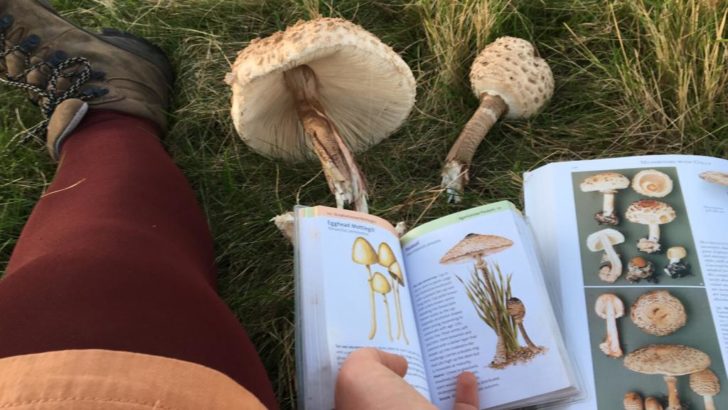
I’ve gone with a physical advent calendar creation, but feel free to use this as inspiration and enjoy daily winter wanders in a way that suits you. We’ve also created a handy digital download for you to enjoy in whatever way you like.
How it works
Make an advent display by following the instructions below, or interpret as you like – the main goal is to get you outside and connect with your surroundings.
Directions:
- To start with, find a nice big piece of cardboard, or a pin board if you have one. Decorate this however you like.
- Then find some nice strong white card, or just use more cardboard/old card.
- Make up 25 cards, whatever size you like – just make sure all 25 will fit on your display board. I decided to make mine 3 inches by 5 inches, so they fit in my coat pocket. Number each card on one side. On the other side write up a summary of the activities below. You can also create your own activities to suit your taste and your local area. If all that writing feels like a bore – fear not, you can print out and stick the activities from our downloadable advent calendar!
- Starting from 1 December, turn over each card, pop it in your pocket and go outside. Theme your walk around the activity it describes, or go off piste!
The advent activities
We’ll be updating this page every day throughout the month, so make sure you keep an eye out.
Day 1
Try to catch a leaf as it falls from a tree. Make a wish for the new year if you do. Draw the leaf and write your wish on your card.
Day 2
Make a spore print. Find some fungi with gills. Break a mushroom/fruit off and take it home and leave it on top of your card for 3+ hours.
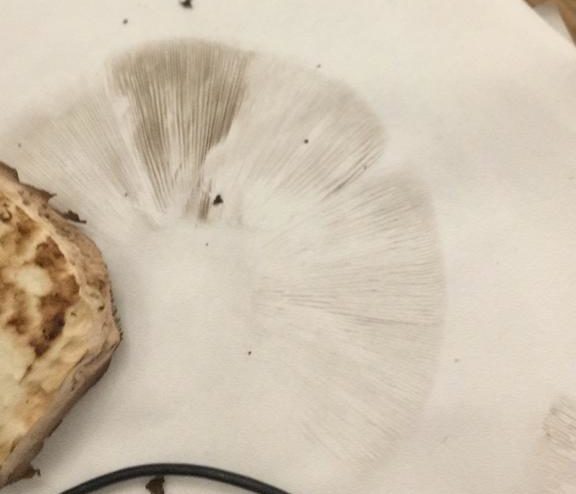
Day 3
On today’s walk, you’ll need a wax crayon, some glue, and a piece of paper. Go for a wander, paying special attention to the texture and patterns of bark on different types and ages of trees. Find a trunk that is particularly drawing you in, and rest the paper against the tree trunk. Then, using the side of the wax crayon (you may need to take the paper wrap off) rub the crayon hard against the paper, leaving an impression of the bark on the paper. Glue this paper onto today’s card, and pin it up.
Day 4
In winter there is often as much to enjoy on the ground as there is in the sky. Today your mission is to find an acorn, or another seed, and bring it home with you. Once you’ve found an acorn or seed, and made sure there are no holes or beasties in it, take it safely home. Draw a picture of it onto your card, and then pop it into a small plastic pot and leave somewhere cold – by a window or outside.
Day 5
Today is World Soil Day, so it’s a great day to do some soil painting. Soil has been used to create pigment in art for thousands of years, dating back as far as the earliest cave paintings. December is when lots of the plants around us retreat back to their roots to store energy over winter, leaving behind lovely organic matter above ground to boost the all important topsoil.
On today’s walk, try to engage with the ground beneath your feet. Where you see a tree try to imagine its root structure unfurling deep into the soil. Take a look at some exposed soil. Is it sandy, or is it more like clay? If it’s somewhere between the two, it’s silt, and if it’s a combination of all three, it’s probably nice and loamy. Take a little bit more than a thimbleful home with you. When you get home, mash it up to get rid of all the lumps, and add a splash of water. Taking today’s card, dip a paintbrush into the soil and paint the tree you saw as it appeared above ground, and as you imagined its roots below.
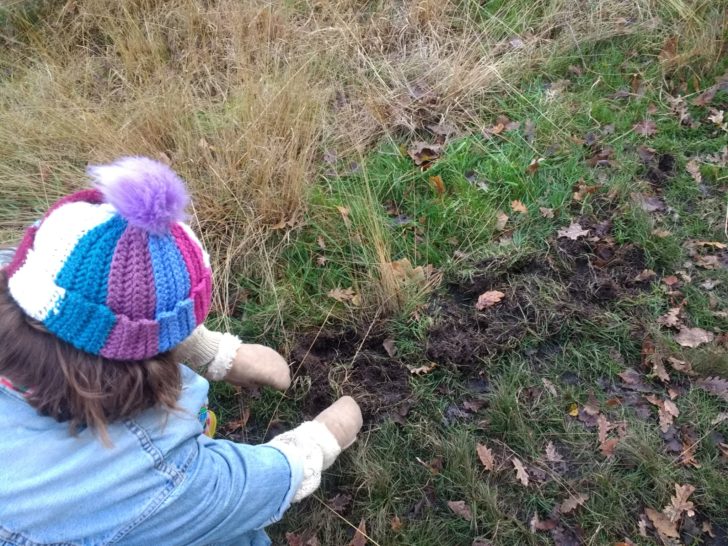
Day 6
Go on a feather hunt. Pin the feather up on your board and imagine or investigate which bird it came from. Pin the feather onto the card, and if you like write the type of bird you think it came from. You can even draw it if you like. Remember to wear gloves when handling feathers!
Day 7
Take a pen out with you today and find somewhere comfy to sit down. Take in the world around you for five minutes. If you get distracted, try to focus on the trees or the wind. Then take out your pen and write a haiku inspired by your surroundings. This is a Japanese poem composed of three lines, usually inspired by nature. Try to use no more than five syllables in the first and third line. You are allowed seven syllables for the middle line.
Day 8
Try to find a pebble shaped like an egg. A nice smooth one. Keep it in your pocket all day to remind you of your wander. At the end of the day put it next to your display board.
Day 9
Bring home the biggest leaf you can! Try to identify it. Look at its veins, its colouring, its edges and the way it curves. Write a description of your leaf onto your card.
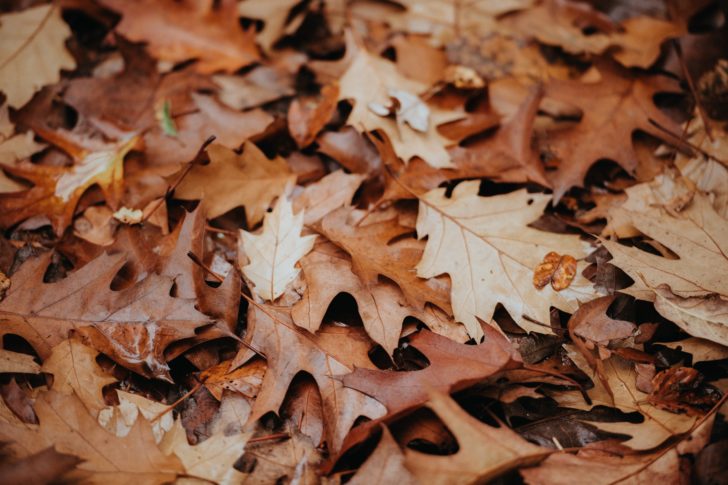
Day 10
Go outside and take five minutes to draw a tree onto your card. It could be your favourite tree, or it could be one that you’ve never noticed before. Take some time to notice all the details and then try to replicate them on your card.
Day 11
Find the smallest leaf you can, then pin it to your card and display it on your board. Try to identify it if you can!
Day 12
Make a rain stick! Forage little seeds and tiny stones and leaves. When you get home, gently feed your leaves into a cardboard tube. Seal one end of the tube with circle of tin foil or strong paper stuck in place with elastic bands, sticky tape, or whatever you like. Put all your very small bits of found materials, like seeds and tiny rocks, into the open end of the tube and then seal the open end of the tube. Ta-daa! You’ve got your own little raincloud. You can also decorate the tube if you like.
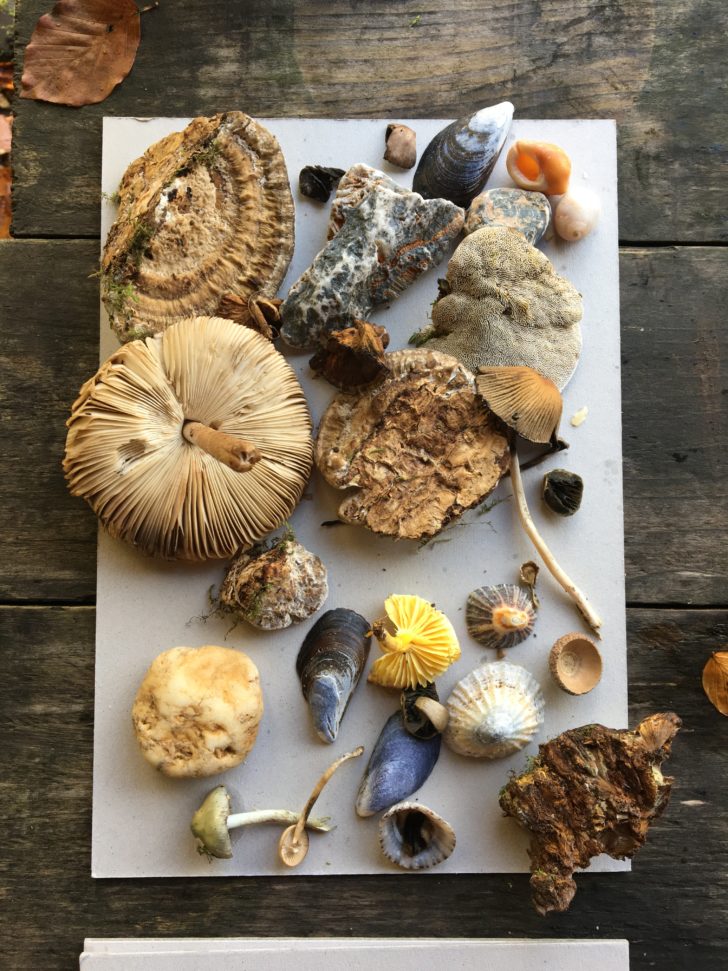
Day 13
Light is our focus today as Christians mark St Lucy’s Day, who is often pictured with a wreath of candles. When you go on your walk today, forage a few bits that you can place or bend around a candle in your home. Light the candle as early as you like to cosy into the dark of winter.
Day 14
Using your piece of card, draw the first animal you see on your wander today.
Day 15
Do some wind marbling. You’ll need different colours of chalk, water, paper and a bucket full of water. Go outside and grate chalk into the water. Lay the paper on top for a moment and let the wind move the paper around. Lift off the water, and lay flat to dry.
Day 16
Find a bird – I choose often choose a characterful crow – and follow it around, watch it for a while. Try to find something to distinguish the bird from others of its kind. When you lose track of the bird, draw it onto a piece of paper, and give it a name (optional!)
Day 17
Find somewhere quiet and take a sound recording on your walk today. Listen to it when you’re at home and get transported back to your quiet place.

Day 18
Count how many doggies you see on your walk today! Draw the smiliest dog on your card and put the total number of spotted dogs.
Day 19
Experiment with natural inks. Forage whatever you like: leaves, berries, fruit. Put in a pot with a cup of water, a pinch of salt, and a teaspoon of white vinegar. Heat in an old pan that you won’t mind dirtying on a gentle boil for an hour, or until water takes on a deep colour. Use a strip of paper to test your ink.
Day 20
Find a pinecone or two. Stuff the gaps with cotton wool. Draw two googly eyes, a pair of wings and a beak, and stick onto the pinecone so it looks like an owl!
Day 21
Find another pine cone. Spread a layer of peanut butter on it, and stick lots of seeds to it. Go for a wander, and place the pinecone in a tree for the birds to tuck into.
Day 22
Gather lots of small leaves, and use twine to tie them to a couple of pillar candles to add a cosy winter atmosphere to your home. Be careful to ensure the leaves don’t touch the flame.
Day 23
On today’s walk look out for animal tracks and snuffles. Write down how many different tracks you find, and if you see a really nice imprint, copy it onto your card.
Day 24
Now it’s time to celebrate! Make a hanging star with twine and sticks. Gather five straight twigs. Lay the twigs out into the shape of a five pointed star. Use short pieces of wire to temporarily secure the sticks together where they cross over each other. Then using twine, tie the sticks together at each point of the star.
Wrap the twine around all of the sticks at the point several times. Pull it tightly to make sure it holds securely. Tie the ends of the string together with a knot. Finish off by tying a loop with the twine, to hang the star from.
For the days when you just can’t go outside
Look around at all your foraged goods, and use them to inspire some homemade wrapping paper. You could make leaf rubbings with wax crayons, or do some holly shaped tattie bashing with a potato, a knife (be careful!) and some red and green poster paint. Tape old bits of paper together to make big sheets, or use newspaper or old brown paper. You could even just glue leaves to paper. The weirder the better!
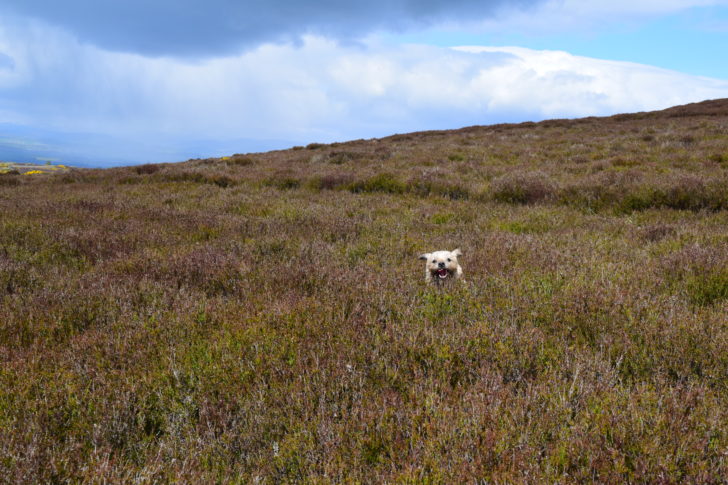
Download our advent calendar (PDF)
Download our advent calendar (printer-friendly)
